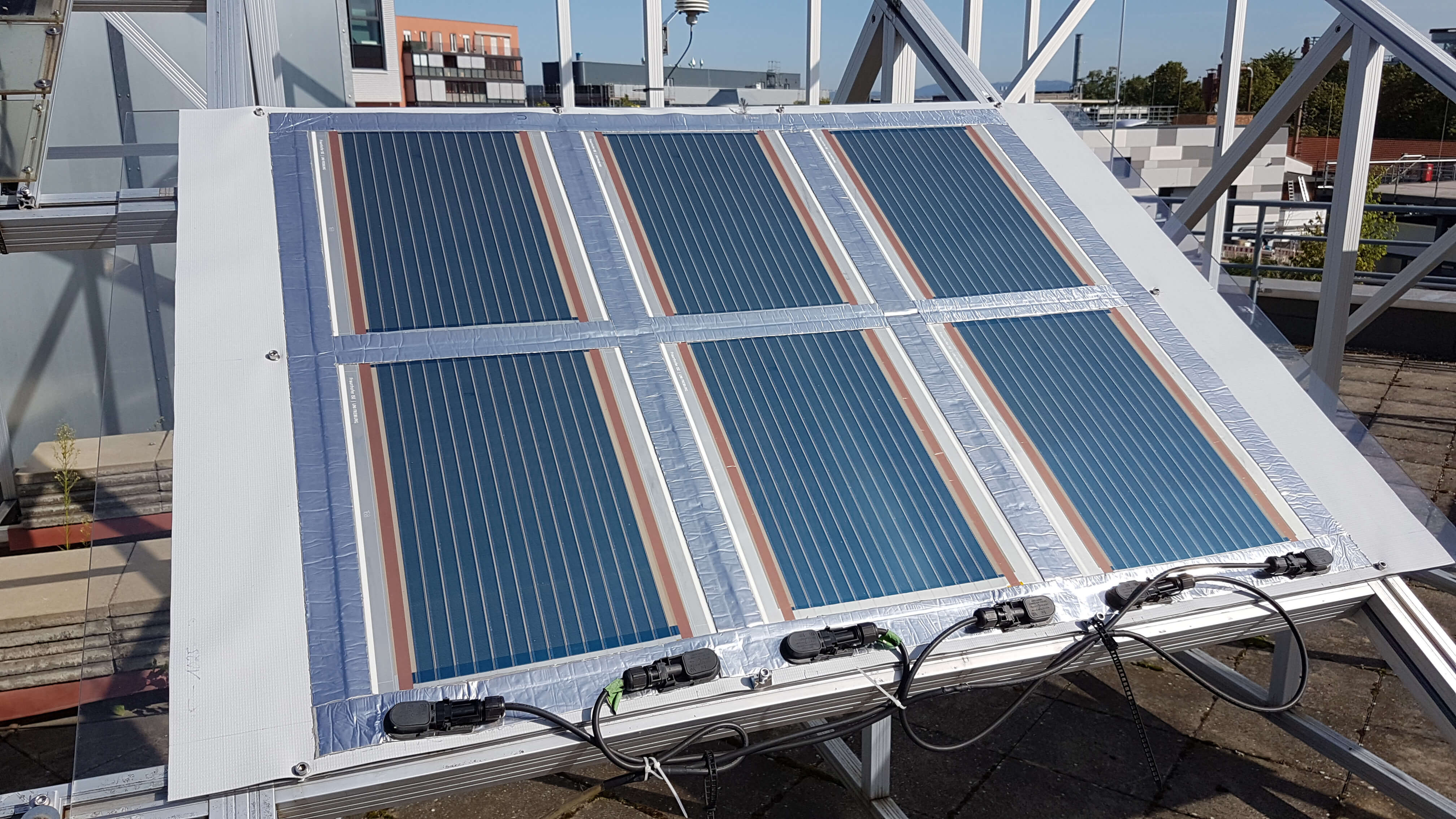| Duration: | 1/2018 - 12/2020 |
| Contracting Authority/ Sponsors: | Bundesministerium für Wirtschaft und Energie (BMWi) |
| Project Partners: | ContiTech Elastomer-Beschichtung GmbH; Benecke-Hornschuch Surface Group; Universität Freiburg |
| Project Focus: |
H2OPV - Organic Photovoltaics to Cover Water Reservoirs
Organic solar cells can be produced on film webs using roll-to-roll printing and coating processes. They can therefore be easily integrated directly or via lamination processes. The solar cells are light and flexible and can also be produced transparently, which makes them interesting for integrated applications such as building facades made of glass and films, photovoltaic active windows and car roofs or agricultural films as well as floating photovoltaics.
As part of the project "H2OPV" sponsored by the German Federal Ministry of Economic Affairs and Energy (BMWi), Fraunhofer ISE, together with ContiTech Elastomer-Beschichtung GmbH and the Benecke-Hornschuch Surface Group, is developing organic photovoltaic modules for integration into a floatable fabric film. This is used to cover water reservoirs. The production of the modules with roll-to-roll coating and printing processes will be further developed on a laboratory coating line to achieve the highest possible efficiency and technical yield. The use of 3D-engraved flexographic printing plates is intended to print particularly fine silver lines to reduce shading and thus increase efficiency. Printing of the organic functional layers is also to be tested with the particularly solvent-resistant printing plates from ContiTech Elastomer-Beschichtung GmbH. The organic solar cells and modules are tested for their long-term stability in the laboratory and under real outdoor conditions. The integration of the modules into the floating film is another important field of work.
